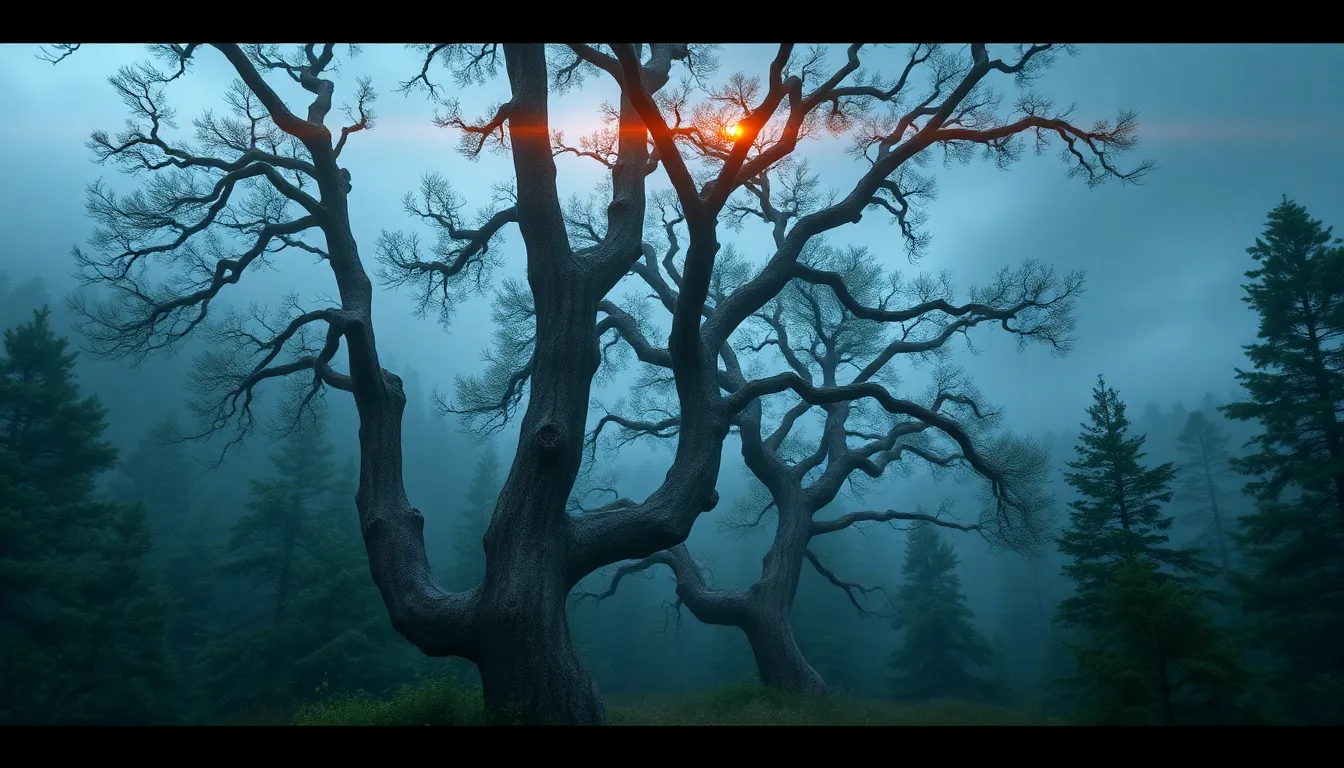The Mystical Larch: Myths of Transformation and Renewal
1. Introduction to the Larch: An Overview
The larch tree, belonging to the genus Larix, is a unique coniferous species that distinguishes itself from other conifers by its deciduous nature. Unlike typical evergreen trees, larches shed their needle-like leaves in the fall, showcasing a stunning transformation of color before they drop. These trees are predominantly found in the cooler regions of the Northern Hemisphere, thriving in mountainous and boreal environments.
Larches play a vital role in their ecosystems, providing habitat and food for a wide array of wildlife. Their softwood is highly valued in woodworking and construction, while their roots help stabilize soil and promote water retention. This dual benefit positions the larch as an essential component of both natural and human-managed landscapes.
2. Cultural Significance of the Larch Across Different Cultures
Throughout history, the larch has held significant cultural importance across various civilizations. Indigenous peoples of North America often viewed the larch as a sacred tree, integrating it into their rituals and practices. The wood was utilized for making canoes, tools, and structures, while the bark was used for crafting baskets and for medicinal purposes.
In Europe, particularly in the Alpine regions, the larch has been associated with resilience and strength. Folklore often depicts it as a protector of the forest, embodying the spirit of endurance through harsh winters and supporting diverse forms of life.
3. The Mythology of Transformation: Larch in Legends
The larch tree is often a central figure in legends that celebrate transformation and change. In some Native American myths, the larch is seen as a conduit between the earthly and spiritual realms, representing the ability to adapt and thrive despite adversity. For instance, a popular legend tells of a warrior who, after a great battle, found solace under a larch tree. The tree’s shedding leaves inspired him to let go of his past and embrace new beginnings.
In European folklore, there are stories linking the larch to ancient rituals of renewal. Villagers would gather around the larch during solstice celebrations, believing the tree’s ability to regenerate after shedding its leaves symbolized the cyclical nature of life and death.
4. Symbolism of Renewal in Nature: The Larch’s Life Cycle
The life cycle of the larch is a powerful symbol of renewal and rebirth. In spring, the tree bursts forth with vibrant green needles, transitioning into a rich golden hue in autumn before shedding its foliage. This seasonal transformation serves as a reminder of the beauty of change and the inevitability of cycles in nature.
- Spring: New growth and vitality.
- Summer: Fullness and shade, offering refuge to wildlife.
- Autumn: A vibrant display of colors, signaling the approach of dormancy.
- Winter: A period of rest, with the larch standing tall and stark against the snow.
5. The Role of the Larch in Spiritual Practices
In various spiritual traditions, the larch is revered as a symbol of transformation and healing. Shamanic practices often incorporate the larch’s wood and needles, believed to carry protective energies. Rituals may involve creating talismans or burning larch wood to invoke strength and renewal.
Cultures across the globe utilize the larch in ceremonies aimed at personal growth and change. For example, some indigenous groups perform purification rituals near larch groves, believing that the tree’s spirit aids in cleansing negative energies and facilitating personal transformation.
6. The Larch and Its Healing Properties
The larch tree has been used in traditional medicine for centuries. Indigenous tribes have employed its bark and resin to treat various ailments, such as respiratory infections and skin conditions. The wood is also known for its antimicrobial properties, making it useful in natural remedies.
In modern herbalism, larch extract is gaining popularity for its potential health benefits, including:
- Boosting the immune system.
- Supporting respiratory health.
- Acting as a natural diuretic.
7. Environmental Significance: The Larch in Ecosystem Resilience
Larch trees contribute significantly to ecological balance and resilience. They are known to improve soil quality and prevent erosion, making them invaluable in reforestation and land restoration projects. The ability of larch forests to thrive in harsh climates also makes them crucial for biodiversity, providing habitats for various species.
Moreover, larch forests play a role in combating climate change by sequestering carbon dioxide, thus helping to mitigate the impacts of global warming. Their unique adaptations to cold environments allow them to flourish where other trees might not survive.
8. Art and Literature: The Larch as a Muse
The larch has inspired countless artists and writers throughout history. Its striking appearance and transformative nature have been depicted in various artistic forms, from paintings to poetry. The tree often symbolizes resilience and beauty amidst adversity.
Notable mentions of the larch can be found in the works of poets who use its seasonal changes as metaphors for life’s transitions, illustrating how the tree embodies the delicate balance between loss and regeneration.
9. Contemporary Relevance: The Larch in Modern Society
In contemporary society, the larch is increasingly appreciated for its role in urban landscapes and sustainability initiatives. City planners are recognizing the importance of integrating larch trees into urban environments, providing shade, improving air quality, and enhancing aesthetic appeal.
Current conservation efforts focus on preserving larch habitats, addressing threats from climate change and invasive species. Communities are actively engaged in planting larches to restore natural landscapes and promote biodiversity.
10. Conclusion: Embracing the Mystical Larch
The larch tree, with its rich tapestry of myths and ecological significance, serves as a powerful symbol of transformation and renewal. Its unique characteristics and cultural importance remind us of the beauty and resilience found in nature. As we move forward, it is essential to appreciate and protect this mystical tree, ensuring that future generations can experience its wonders and draw inspiration from its life cycle.




